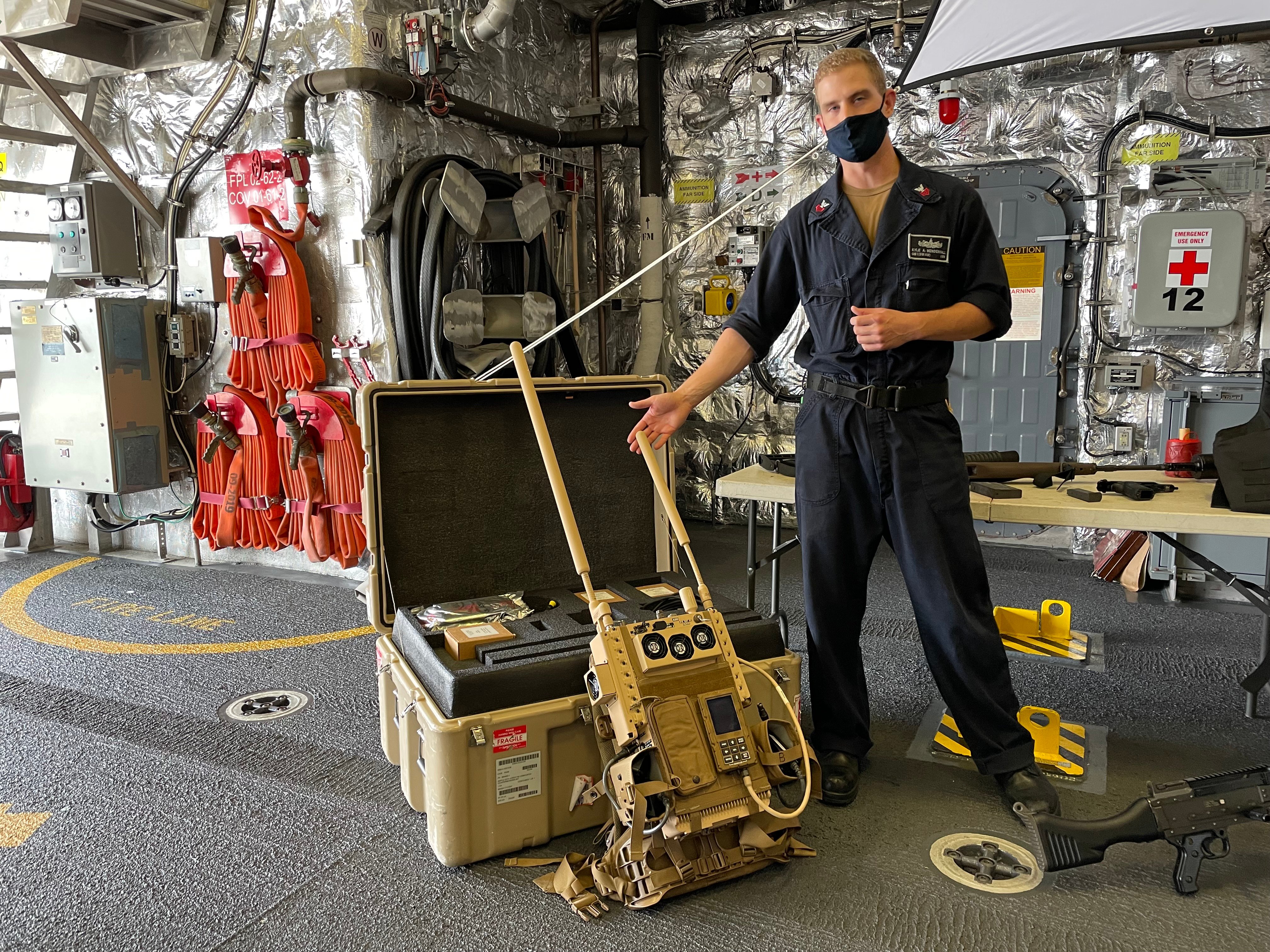
Navy Deploys DRAKE System to Safeguard Against Drones
On August 16, 2021, Gunner’s Mate Kyle Mendenhall showcased the Drone Restricted Access Using Known Electromagnetic Warfare (DRAKE) system aboard the USS Kansas City (LCS-22). This innovative system, developed by Northrop Grumman, has become an essential component of the Navy’s surface fleet in response to the increasing prevalence of drones.
In recent years, the ease of acquiring inexpensive drones has raised concerns about unauthorized aerial access to naval vessels. Gunner’s Mate Kyle Mendenhall pointed out that anyone can purchase a relatively affordable drone and potentially use it to breach security measures and approach Navy ships. Recognizing this vulnerability, the Navy sought a solution to defend against this growing threat.
The DRAKE system functions like a conventional jammer. When a drone comes too close to the ship or enters restricted areas, the DRAKE system is activated, effectively creating an electromagnetic shield that disrupts the drone’s control signal. Mendenhall described it as projecting an “umbrella” of protection around the ship, preventing drones from approaching.
The DRAKE system can be powered by batteries or connected directly to the ship’s power supply. Originally designed to prevent improvised explosive devices (IEDs) from detonating in Iraq and Afghanistan, the DRAKE system now repels drones by interfering with their communication frequencies. Although it doesn’t physically disable drones, it restricts their movement once they enter the protected area.
Notably, the DRAKE system can emit both high-band and low-band signals, effectively forming a protective barrier around the ship by disrupting the communication between the drone operator and the unmanned aerial vehicle (UAV). Operators can wear the system as a backpack, allowing them to move around the ship quickly.
Furthermore, the DRAKE system’s flexibility extends to its configurability based on the ship’s geographical location and operational area. This adaptability ensures that the system can effectively counter the specific threats posed by drones in different regions.
While the Navy has been addressing the challenge of Iranian drones operating in the Persian Gulf, recent events have underscored the risk drones pose to surface ships. An exploding drone killed two crew members aboard a merchant tanker off the coast of Oman in July, emphasizing the need for effective countermeasures.
The DRAKE system is continuously in operation aboard ships to detect drones, though it doesn’t always actively block UAVs. Mendenhall explained that it’s challenging to determine the direction from which a drone may approach, so having the system on standby is crucial for early detection and deterrence.
In the continental United States, the ship’s commanding officer must authorize the use of the DRAKE system. However, if a threat is identified, Mendenhall can activate the system and then report to the chain of command. Anti-terrorism watch officers also have the authority to employ the system when the ship is in port, although its use is reserved for situations where there is a clear threat.
In conclusion, the deployment of the DRAKE system represents a significant step in safeguarding Navy ships against the increasing drone threat. Its adaptability and effectiveness make it a valuable tool in maintaining security and protection in an ever-evolving technological landscape.






